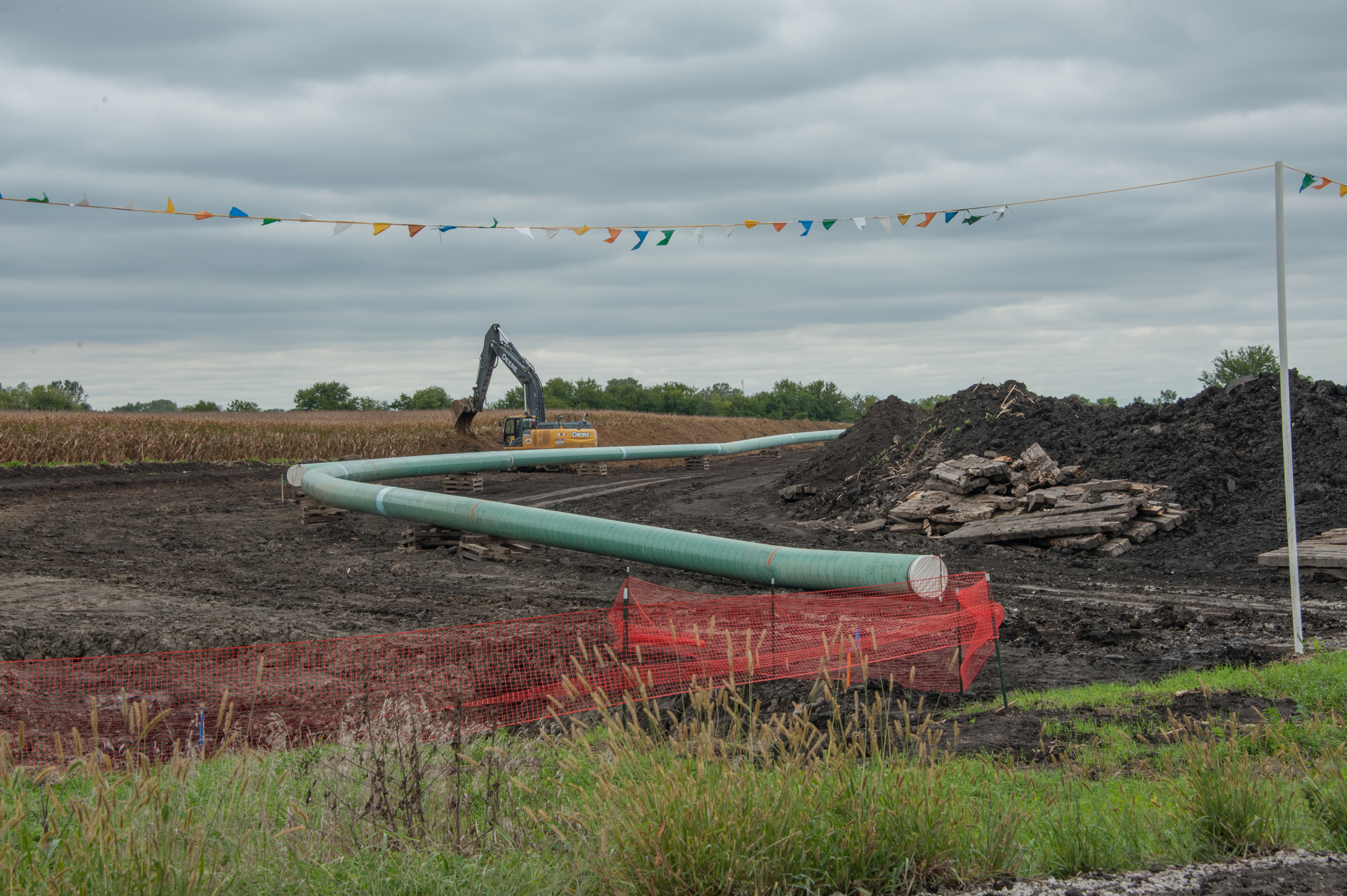
MANY OF US ARE AWARE that there has been a struggle playing out in North Dakota between the native American community and the federal government for the better part of 2016. Standing Rock Sioux Tribe and its supporters have protested the construction of the proposed 1200-mile Dakota Access Pipeline (DAPL) for months. The pipeline would carry sweet crude oil from Bakken Formation oil fields in North Dakota to Illinois refineries, crossing under the Missouri River and Lake Oahe. Transporting 450,000 gallons of oil a day, the $3.7 billion project would put the main water supply for the Standing Rock Sioux community at extreme risk for contamination. Last week, protesting members of the tribe, who have come to be known as “Water Protectors,” won a major concession: the US Army Corps of Engineers, the federal agency in charge of granting or denying permits to commence with the project, announced that it would deny the permit to build the pipeline.
To recap the events leading up to the protest and the revised decision: The North Dakota Public Service Commission granted Dakota Access, LLC its permit in January 2016. At a hearing held by U.S. Army Corps of Engineers, the Native American people unanimously opposed the decision. In July, the US Army Corps of Engineers granted permit approval, and the tribe filed an injunction to stop construction. Energy Transfer Partners — parent company of Dakota Access, LLC — counter-sued, and a month later, there were over 3,000 people protesting the pipeline at Standing Rock. At the end of August, the United Nations Permanent Forum on Indigenous Issues published a statement in support of the protection:
States shall consult and cooperate in good faith with the indigenous peoples concerned in order to obtain their free, prior and informed consent before adopting and implementing legislative or administrative measures that may affect them.
— Article 19, United Nations Declaration on the Rights of Indigenous Peoples
Allies
Relationships with other organizations, movements, and people have proven advantageous to the #NoDAPL movement. U.S. Green Party presidential candidate Jill Stein brought attention to the protest when she sprayed “I approve this message” in red paint on a bulldozer. Stein, when speaking about the protest and the interests of the tribes at stake, said:
“We salute the courageous people of the Standing Rock Sioux reservation and their allies who are standing up to protect their land and our future on Earth from the poisonous fossil fuel industry and an economy that puts corporate profits over people and planet.”
— Jill Stein
Black Lives Matter also showed support for the Water Protectors at Standing Rock, making the connection between the displacement of black people and Indigenous people. In a statement, Black liberation was linked to Indigenous sovereignty:
“Environmental racism is not limited to pipelines on Indigenous land, because we know that the chemicals used for fracking and the materials used to build pipelines are also used in water containment and sanitation plants in Black communities like Flint, Michigan.”
In terms of celebrity involvement, Shailene Woodley, a 25-year-old actress known for her roles in The Fault in Our Stars and the Divergent series, joined the #NoDAPL movement. In addition to going to Standing Rock and livestreaming on Facebook, she encouraged people to divest from the Dakota Access Pipeline by moving their money from banks to credit unions. Her arrest on October 10, 2016 for trespassing drew more national attention to the movement. Through her wide-reaching social media presence, she continued to share the peaceful activities at Standing Rock and, later, challenged ideas about the true roots of the Thanksgiving holiday that our nation celebrates.
Bodies on the Line and Consistency
The Water Protectors at Standing Rock have literally used their bodies as tools of activism, going as far as locking their bodies to heavy equipment in September. Even after the decision denying a permit to build the pipeline was announced, they have remained on the land to protect the environment. They have withstood harsh weather conditions and the aggression of law enforcement, tear gas, rubber bullets, and water cannons. Even in the face of violence, they remained peaceful, knowing their bodies would take the brunt of the pushback from their opposition. They were prepared with appropriate clothing, medical supplies, and training for Water Protectors before they joined the frontline.
Diverse Approaches
During the protection — commonly referred to as a protest — the Native American people in North Dakota have taken other actions to reach varied audiences. Youth supporters started the movement with a 2000-mile relay to Washington DC. On social media, the #NoDAPL hashtag was used to spread the news of what has been happening at Standing Rock all over the world. It sparked conversation all over the world, and prompted people to send financial support and stand in solidarity by divesting from the Dakota Access Pipeline.
In addition to taking legal action against the company, the movement has also made sure to actively engage the government in dialogue. In September, Brian Cladoosby spoke to Cabinet-level advisors at the Native American Affairs Council meeting. The activists have not limited themselves to any one method, but have been consistent with prayer, peaceful opposition, and, most importantly, openness to new ideas.
Education
The Standing Rock Sioux tribe has turned the Dakota Access Pipeline challenge into a learning opportunity for the entire world. Many have only just learned, over the past few months, of the history of Native American people who have inhabited this land for centuries. It has been an illuminating lesson in responsibility for and preservation of the land we occupy. It has been made clear that all pipelines leak, and this has far-reaching effects on people and the environment. Unfortunately, earlier this month, the largest leak in North Dakota since 2013 was discovered, illustrating all we have been warned against by Water Protectors. An estimated 176,000 gallons of crude oil from the Belle Fourche pipeline has leaked into the Ash Coulee Creek and the surrounding environment, only 2.5 hours away from Standing Rock.
Through all of this, the Water Protectors have been threatened, assaulted, and arrested, but upheld their commitment to peace. They have not backed down, and have refused to fight fire with fire. Even their peaceful presence has been a lesson in non-violent actions and self-control. By putting allies to work, laying their bodies on the line, using diverse approaches, and educating the public, they have won an integral part of the battle. Despite the latest setback, the activists at Standing Rock have shown us that water is worth protecting, even with our own bodies, because of one fact: water is life.











-300x169.jpg)




